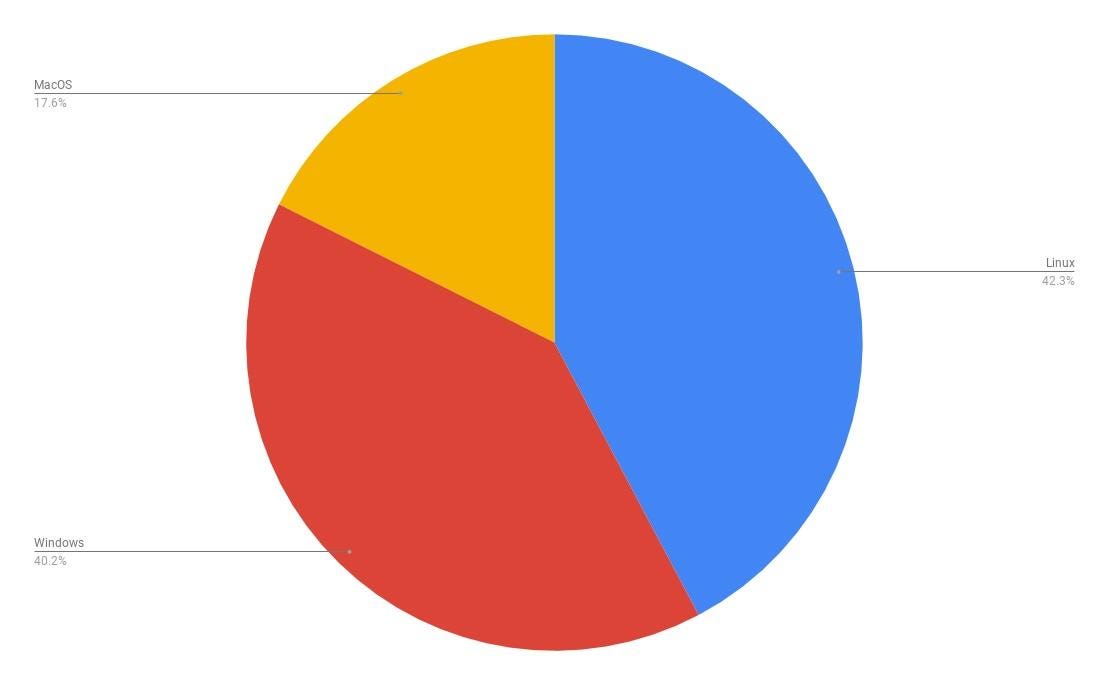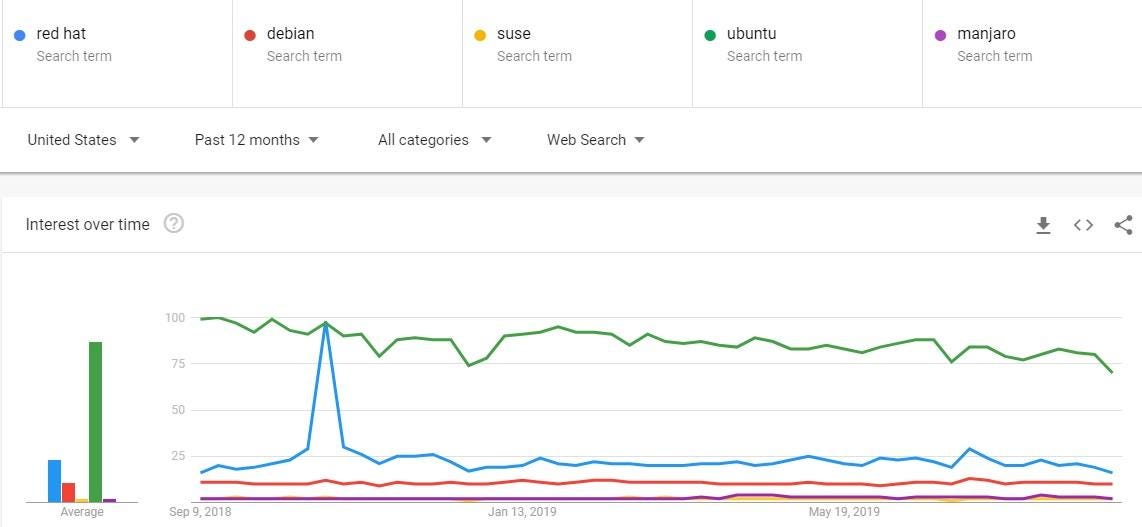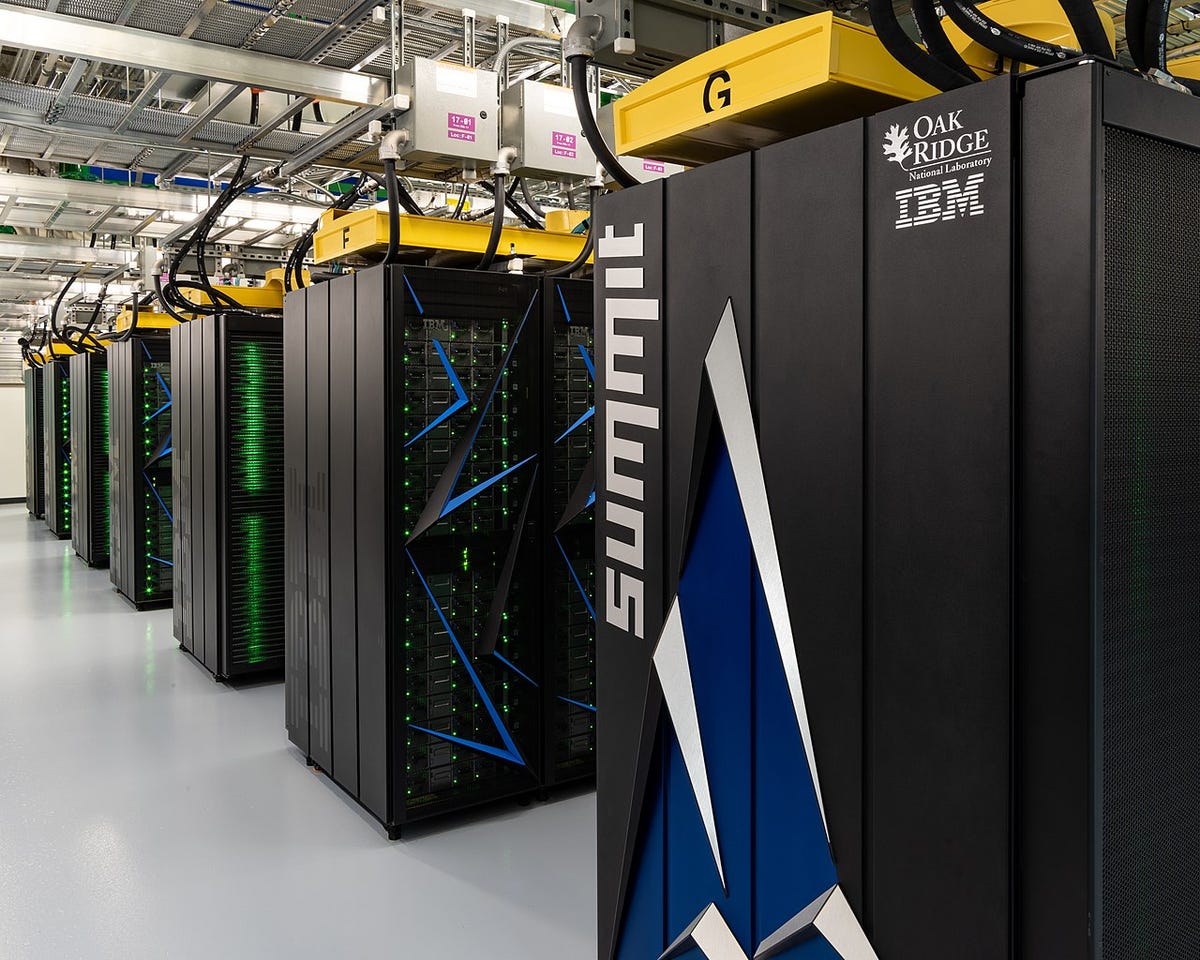WHAT ARE OPEN-SOURCE OPERATING SYSTEMS?
Underpinning an operating system, for example Windows on your PC or Android on your phone, is many, many lines of code.
On a closed-source OS like Windows, that code can only be altered by Microsoft, and only viewed by few selected customers like big companies. In contrast, the code underlying open-source operating systems is not only freely available for anyone to view but also to modify, use and share, under the terms of open-source licences such as MIT, GNU Public Licence, and Apache 2.0.
Allowing anyone to inspect the source code in this way has many advantages. Those with sufficient technical knowledge can customise the OS and fix problems as they arise by delving into the source code.
It also allows the development of open-source operating systems to be community-led, or at least influenced, with technical users suggesting changes to an open-source operating system’s codebase.
WHAT IS LINUX?
At the heart of most open-source operating systems today is the Linux kernel. Linux provides the core of these operating systems, the kernel that interacts with a computer’s hardware, and was developed by Linus Torvalds in 1991.

This kernel provides the core functionality any OS needs, controlling how data is processed and parcelled out into memory, how the system handles files, how it interacts with devices plugged into the computer and other fundamental tasks.
Operating system makers then build tools that plug into this Linux kernel to create an operating system. These tools range from the windowing systems that powers graphical desktops to the systems managing services running in the background. The development of the Linux kernel continues under the stewardship of Torvalds, with version 5.0 of the Linux kernel recently released.
The Free Software Foundation also points out how much modern open-source operating systems also borrow from the GNU OS and its tools, arguing that Linux-based operating systems should be referred to as GNU/Linux-based operating systems.

ARE THERE OPEN-SOURCE OPERATING SYSTEMS THAT AREN’T BASED ON LINUX?
Yes, while Linux underpins most open-source operating systems, there are OSes built around other kernels.
One notable alternative is FreeBSD, a free operating system whose lineage dates back to the Berkeley Unix operating system of the 1970s but that isn’t built around the Linux kernel.
While not based on Linux, the Unix-like system can be used with the Gnome 2 and KDE desktops, whose layout will be familiar to long-time Linux users, as well as running many Linux-compatible applications.
Perhaps the most surprising alternative is ReactOS, a work-in-progress open-source OS that looks similar to Windows XP and that is designed to be a Windows replacement that behaves just like the old favorite.
Anyone thinking of trying ReactOS should be aware it is alpha software, so expect a lot of bugs and missing functionality.
For any old-school computer users pining for the DOS command line, there’s also FreeDOS, an open-source, DOS-compatible operating system that can be used to run legacy software — with its makers claiming that any software that works on MS-DOS should also run on FreeDOS.
WHAT DISTINGUISHES THE DIFFERENT TYPES OF OPEN-SOURCE OPERATING SYSTEMS?
While Linux is at the heart of many operating systems, there is a huge variety in the look and feel of Linux-based operating systems.
Some focus on simplicity and usability, such as Ubuntu, Linux Mint and Elementary OS; others on security, such as Tails; others on providing powerful tools for technical experts, such as Debian and Gentoo. And while many have similarities with the Windows desktop, others borrow design cues from macOS, while others offer no graphical interface at all by default, just a bare command line.
HOW DO OPEN-SOURCE APPLICATIONS WORK?
Open-source applications are fundamentally the same as proprietary applications. The difference is that, like open-source operating systems, the source-code of the applications is available for anyone to inspect, modify and share.
WHAT ARE THE MOST POPULAR OPEN-SOURCE OPERATING SYSTEMS?
Working out which are the most popular open-source operating systems isn’t straightforward.
On the face of it, the most popular open-source operating system is Android, which is based on a modified version of the Linux kernel. The issue is that what many people think of as Android is not wholly open-source. At the core of the Android OS is the Android Open Source Project, which is open, as the name suggests, but built around that are closed-source Google-branded apps.
There’s also Chromium OS, the open-source operating system designed around running web apps. While not widely distributed in on its own, Chromium OS forms the basis of the Chrome OS that runs on Chromebooks, which are particularly popular in the education market.
Other than that, Linux-based operating systems still only occupy between one to three percent share of the desktop PC market. Among that share are a mix of old favorites such as Ubuntu and Debian and newer challengers such as Linux Mint and Elementary OS.
If you look at the latest Google Trends results for the popular Linux distros, it’s Ubuntu that comes out on top, as you can see below.

It’s a different story when it comes to server operating systems, where Linux-based systems such as Ubuntu, Red Hat Enterprise Linux and CentOS tend to dominate, with Linux also a favorite on public cloud computing platforms, such as Amazon Web Services, Google Cloud Platform, and Microsoft Azure.
Linux-based operating systems are also pervasive in supercomputing, with every single one of the TOP 500 list of the fastest supercomputers in the world running Linux.

HOW DO OPEN-SOURCE OPERATING SYSTEMS PROVIDE SECURITY?
By having many people scrutinize the code, the theory goes that someone is more likely to spot bugs, security holes and malicious routines in the OS.
That doesn’t always work in practice though, with at least one high-profile example of a serious security flaw remaining in open-source operating systems for years before being spotted. Some prominent developers argue modern software is so complex that targeted, expert scrutiny by few is more important than cursory inspection by many.
There are also many open-source operating systems focused on providing highly secure machines that also protect the privacy of the user.
For example, Tails is a privacy-centric OS designed for those who want to evade tracking as much as possible.
Tails can be run from a DVD or USB stick and its designers say it will “leave no trace on the computer you are using”, will attempt to anonymise internet use via the Tor network, and will encrypt your files, emails and instant messaging.
Another example of a security-focused, open-source OS is Qubes, which is an operating system that ramps up security by compartmentalizing different activities into isolated instances called qubes that are unable to affect each other. For example, you might have one qube for visiting untrusted websites and another for doing online banking.
WHY SHOULD YOU USE OPEN-SOURCE SOFTWARE FOR YOUR BUSINESS?
If you needed proof of open-source software’s value to business in 2019, look no further than IBM’s recent purchase of Red Hat.
The purchase was largely seen as an on-ramp for IBM to the datacenters that underpin the cloud, which are increasingly reliant upon open-source software and tooling to prop up their platforms. Red Hat’s made a multi-billion dollar business out of supporting open-source software and today owns organizations responsible for everything from integration services for the open-source cloud platform OpenStack through to creating the KVM hypervisor.
As businesses migrate more and more systems to these cloud platforms, the open-source software at their heart will increasingly become a key part of any enterprise architecture — even more so than it’s already important role today. Additionally, cloud platforms are increasingly running a mesh of microservices that rely on an array of open-source tooling, from Docker containers to the Kubernetes platform for managing those containers.
Gartner’s Hype Cycle for Open-Source Software, 2018 gives examples of open-source infrastructure projects as Clearwater Core IMS, Core Network Dynamics (openEPC), OpenBTS, openRAN, Open Edge Computing, OpenStack, Docker and KVM.
It says that “adoption of open-source infrastructure software continues to disrupt the CSP [communications service provider] ecosystem” and advises CSPs to accelerate the adoption of open-source infrastructure software.
The 2019 Red Hat State of Enterprise Open Source report, based on 950 interviews with worldwide enterprise IT leaders, found only 1% of enterprises dismiss the importance of open-source software.
In the past year, only 3% of enterprises who had surveyed their usage of open-source technologies said they had plans to scale them back, with 59% planning to increase their open-source commitment.
WHAT ARE THE MAIN SECURITY CONCERNS WITH OPEN-SOURCE OPERATING SYSTEMS?
While the jury is still out on whether proprietary or open-source operating systems are more secure, there have been several recent negative reports in relation to the security of open-source software in general.
Sonatype’s DevSecOps Community Survey, saw IT professionals report that open-source breaches have increased by 71% over the past five years. Meanwhile Synopsys’ Open Source Security and Risk Analysis report, which analyzed the anonymized data of over 1,200 commercial codebases from 2018, found that up to 60% of codebases used by enterprises contain at least one vulnerability originating from open-source components.
That said, there are also frequent reports about flaws in proprietary software being exploited.
HOW STABLE ARE OPEN-SOURCE OPERATING SYSTEMS?
While historically Linux-based operating systems may have been characterised as difficult to get working due to issues such as poor driver support, today there are a wide range of Linux-based operating systems from Ubuntu to Linux Mint that are basically as easy to set up on x86 PC hardware as a Windows OS.
There are also a wide range of Linux-based operating systems that work on Arm-based hardware, of the type typically found in mobile devices. Although these are typically less stable than Linux-based operating systems on x86 computers there are exceptions, such as the Debian-based Raspbian on the low-cost Raspberry Pi computer, which works very well thanks to the ongoing efforts of Raspberry Pi Trading.
WHAT ARE OPEN-SOURCE SOFTWARE’S ADVANTAGES AND DISADVANTAGES RELATIVE TO CLOSED-SOURCE SOFTWARE?
The Red Hat State of Enterprise Open Source report found that businesses typically choose open-source software because it’s cheaper, with 33% of enterprise users citing it’s lower total cost of ownership (TCO) as its chief benefit. There is a shift in thinking, however, with 29% turning to open source because it gives them access to the latest innovations – a reference to the crucial role of open-source technologies in supporting microservices and containers in the cloud, or its use in the burgeoning field of machine learning.
Security remains the primary worry for businesses, with 38% claiming security fears are what’s stopping them from increasing their use of open-source software. ZDNet’s Vaughan-Nichols points out if you don’t keep on top of open-source code, you may miss security patches and fixes — giving the famous example of consumer credit reporting agency Equifax, which exposed 143 million Americans’ credit data, thanks to not updating Apache Struts.
WHAT IS THE FUTURE OF OPEN-SOURCE OPERATING SYSTEMS?
Writing on ZDNet’s sister site TechRepublic.com, open-source veteran Jack Wallen says open-source communities are on the verge of a sea change and will become far more inclusive in terms of gender and ethnic diversity, fostered by recent revamps of codes of conduct to make communities more welcoming and less abrasive.
Microsoft has had a Damascene conversion when it comes to open source, with current CEO Satya Nadella famously declaring ‘Microsoft loves Linux’, and Wallen forecasts that a significant number of additional Microsoft patents will be made freely available under the Open Innovation Network licence by the end of this year, on top of the 60,000 already released. The continuing release should be beneficial to the continued development of open-source operating systems, with OIN’s CEO Keith Bergelt, saying at the time the original 60,000 patents were released that they cover: “everything related to older open-source technologies such as Android, the Linux kernel, and OpenStack; newer technologies such as LF Energy and HyperLedger, and their predecessor and successor versions.”
The year of the Linux desktop has been imminent for years but Wallen hopes that a computer manufacturer will start selling consumer-grade Linux desktops and laptops that compete with the Chromebook.
Others are not so sure about the prospects of the Linux desktop. ZDNet’s Steven Vaughan-Nichols says that while the move towards desktop-as-a-service could well see Linux establish a foothold, that, without a concerted effort by the open-source community, it’s also possible the Linux desktop will remain a niche operating system for power users.
[“source=zdnet”]
